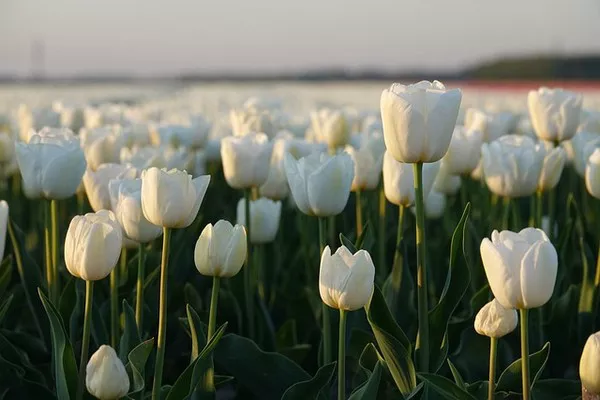In the realm of botanical beauty, white flowers stand out as timeless symbols of purity, elegance, and grace. These pristine blossoms have captivated cultures around the world for centuries, finding their place in gardens, ceremonies, and art. In this exploration, we delve into the profound symbolism behind white flowers, unraveling the diverse meanings and cultural significance that these blooms carry.
Cultural Reverence: A Global Perspective
White flowers have transcended geographical boundaries and cultural divides, earning a revered status in various societies. In many Eastern cultures, such as those in Japan and China, white flowers are associated with purity and perfection. Cherry blossoms, peonies, and chrysanthemums, when displayed in their purest form, evoke a sense of serenity and divine beauty.
In Western traditions, white flowers are often linked to innocence and weddings. The classic white rose, for instance, is an emblem of pure love and new beginnings. Bridal bouquets adorned with white lilies, calla lilies, or orchids symbolize the purity of the union and the hope for a life filled with harmony.
Spiritual and Religious Connotations
Beyond their aesthetic allure, white flowers carry profound spiritual and religious meanings. In Christianity, white blooms are frequently associated with the divine and the sacred. White lilies, often referred to as the “Madonna Lily,” symbolize the Virgin Mary’s purity and the resurrection of Christ. The use of white flowers in religious ceremonies symbolizes the spiritual journey towards enlightenment and transcendence.
Similarly, in Hinduism, white flowers play a significant role in rituals and worship. The purity and simplicity of flowers like jasmine and lotus are believed to please deities during religious ceremonies, symbolizing devotion and spiritual purity.
Expressing Sympathy and Remembrance
White flowers also hold a poignant role in times of grief and loss. The solemn beauty of white blooms conveys sympathy, compassion, and a sense of peace to those mourning the departure of a loved one. Lilies, particularly the white variety, are often chosen for funeral arrangements, symbolizing the restored innocence of the departed soul.
The White Calla Lily, with its elegant, trumpet-shaped blossom, is another funeral favorite, symbolizing resurrection and rebirth. Its graceful form provides solace and represents the belief in life after death, offering a comforting presence during somber moments.
Embracing the Ethereal: White Flowers in Art and Literature
Artists and writers have long been inspired by the ethereal beauty of white flowers, incorporating them into their works to evoke a sense of purity and transcendence. From classical paintings to modern literature, the symbolism of white blooms has been woven into various creative expressions.
In Claude Monet’s iconic water lily series, the delicate white petals floating on serene ponds create a calming and meditative atmosphere. The use of white flowers in art often transcends their physical form, inviting viewers to contemplate the deeper meanings and emotions associated with these blossoms.
In literature, authors frequently employ white flowers as powerful symbols. William Wordsworth’s “To a Snowdrop” uses the pristine snowdrop as a metaphor for hope and renewal in the face of adversity. The delicate white blossom emerging from the cold winter ground becomes a symbol of resilience and the promise of a brighter future.
Healing and Holistic Practices
The holistic and healing properties of white flowers have been recognized across various alternative medicine practices. In aromatherapy, essential oils extracted from white flowers such as jasmine and chamomile are known for their calming and soothing effects. These fragrances are often used to alleviate stress, anxiety, and promote a sense of tranquility.
In herbal medicine, white flowers like elderflower and hawthorn blossoms are valued for their medicinal properties. These flowers are believed to have anti-inflammatory, antioxidant, and immune-boosting benefits, contributing to both physical and emotional well-being.
Feng Shui and the Energy of White Flowers
In the practice of Feng Shui, the ancient Chinese art of harmonizing energies in the environment, white flowers play a vital role. White is associated with the metal element and represents clarity, precision, and a sense of purity. Incorporating white flowers into home decor or garden spaces is believed to enhance the flow of positive energy, creating a harmonious and balanced environment.
The choice of white flowers in Feng Shui is often dictated by their specific characteristics and the energy they bring. For instance, white orchids are thought to attract good fortune and blessings, while white peonies symbolize peace and prosperity.
Conclusion
In conclusion, the symbolism of white flowers transcends mere aesthetics, delving into the rich tapestry of human emotions, spirituality, and cultural traditions. These pristine blossoms continue to enchant and inspire, whether adorning sacred ceremonies, expressing love and sympathy, or serving as muses for artists and writers.
As we navigate the diverse meanings associated with white flowers, it becomes evident that their allure lies not only in their visual appeal but also in the profound connections they forge with the human experience. Whether invoking a sense of purity, symbolizing new beginnings, or providing solace in times of sorrow, white flowers stand as timeless ambassadors of grace and elegance in the ever-evolving tapestry of life.


